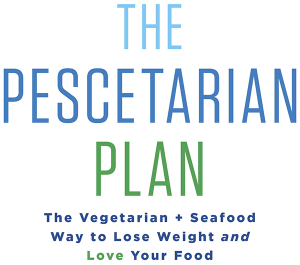By Janis Jibrin, November 20, 2015
A sure way to ruin a perfectly pleasant dinner party is to start an argument about genetically modified organisms, or “GMOs”. Opponents say GMOs are creating scary, experimental foods that could harm us; proponents argue they’re not only safe, but help feed the world and even reduce pesticide use.
Genetic engineering 101
What are genetically engineered foods? They’re created when a gene (or genes) is extracted from one organism (a plant, bacterium, or animal) and inserted it into another organism, such as a crop. For example, much of the corn grown in this country contains a gene from BT (Bacillus thuringiensis) which produces a protein that is toxic to certain insects, thus reducing the need for pesticides.
Genetic engineering doesn’t always introduce a new gene; sometimes it actually removes or alters a gene. But however it’s done, GE plants and animals are permanently changed; in many cases their offspring will also contain the new genetic make-up.
It Used To Be Called “Breeding”
Farmers and ranchers have been tinkering with genetics forever—picking out the heartiest crop or fasted-growing animal or fish and breeding it. For instance, systematically selecting and breeding the leanest pigs has produced pork that’s about 16 percent lower in fat and 27 percent lower in saturated fat. Grafting two plants together to create a genetically change plant also has a long history.
But instead of breeding or grafting, genetic engineering inserts or alters specific genetic material in a lab.
The Opposition
Opponents of genetic engineering (GE) say that this tinkering can create toxins, allergens, and other unknown and possibly dangerous results. They’ve been proven right a few times. For instance, to jack up amino acid levels in soybeans (so they would have a more “complete” protein), scientists inserted a gene from Brazil nuts. But there was an unwanted side effect: a Brazil nut protein that causes allergies in susceptible people. That meant if you were allergic to Brazil nuts, you’d now be allergic to the GE soy. Production of the soybean was halted after the discovery was made.
Another worry: Seeds from GE vegetables or fruit could float out of farms, spreading in the wild. The fear is that the GE seeds would “take over”, outbreeding wild versions of say, blueberries or other plants, and reducing the biodiversity. Or, they breed with wild plants, creating unknown outcomes.
The Fans
Proponents of genetic engineering say it produces crops with higher yields, reduces pesticide use, and can enhance nutritional value. These are important benefits in a world with a finite amount of crop-growing land, and an expanding population. They argue that mishaps like the Brazil nut allergen are very rare, and that instead, genetic engineering allows a lot more control over the new traits than traditional breeding.
They’re Everywhere
Whether you’re for, against, or indifferent to GE foods, you’re eating them! About 70 percent of processed foods we eat contain genetically engineered ingredients, according to the consumer watchdog group Center for Food Safety. (CFS) That includes soup, soda pop, cookies, cereal, crackers, and frozen meals to name a few. It’s because so many of these foods contain soy and corn; about 90 percent of these crops grown in the U.S. are genetically engineered. High portions of sugar and canola oil are also GE, and moderate amounts of produce (such as certain types of squash, papaya, potatoes and tomatoes).
You’re eating these GE foods without even knowing it, because products don’t have to be labeled as such. Not so in the European Union countries and Japan, which is why these countries sell very few GE foods. However, you can tell if a product does not contain GE ingredients: if it’s 100 percent organic and/or bears the “Non GMO Project Verified” seal. To get this seal, products must contain no more than 0.9 percent genetically engineered ingredients. (“GMO” stands for “genetically modified organisms,” which is the same as “genetically engineered”.)
Up until recently the only GE foods sold on the market were plant foods. But in late 2015 the Food and Drug Administration authorized the sale of genetically modified salmon (click here to read about this.)
My bottom line: Looking objectively at the research, I don’t see evidence that genetically engineered plants have harmed us or the planet. But what has harmed the environment big-time: The endless acres of government subsidized corn and soybeans. They deplete the soil, use unconscionable amounts of water, and massive amounts of fertilizer which wind up polluting rivers and other bodies of water. This “big farming” is a problem whether crops were genetically engineered or not.
That said, I can see how genetic engineering gone wrong could pose a danger. But so far, I don’t see evidence that that’s happened.







